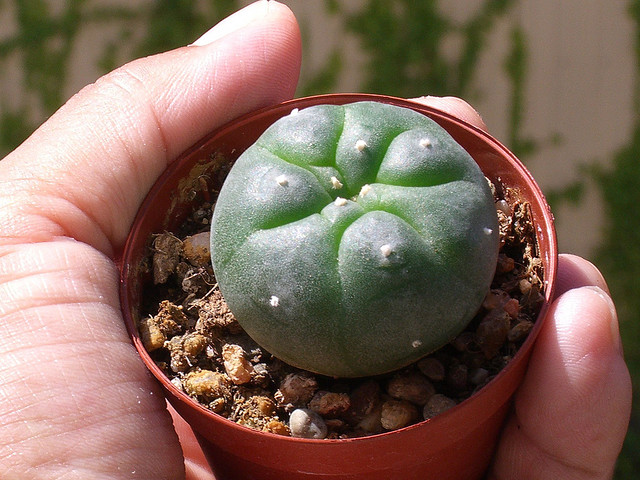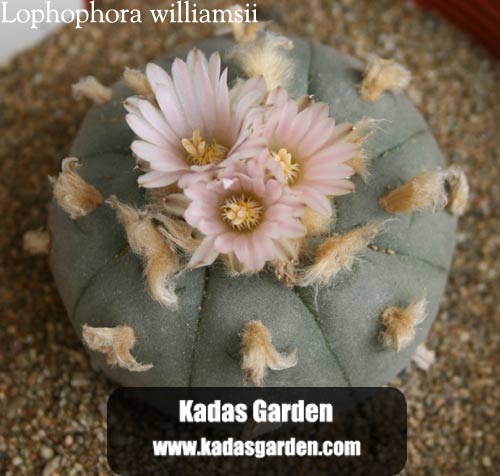Reproduction:A Tale of Two Cacti
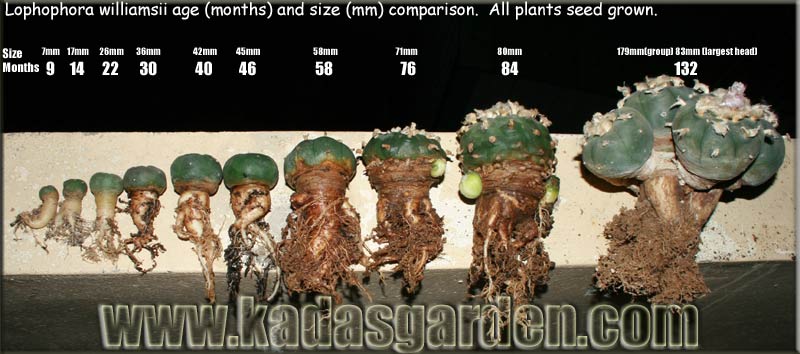
The picture above is one example of the growth rate for a
typical plant. To see more photos visit
Kada's Garden.Lophophora williamsii will flower all year in favorable conditions; however their growth cycle rate is very slow. Most of the time, Reproduction occurs by sexual means. When the conditions are right for the plants to flower, and the ovules are fertilized during that season. A year later, these ovules will mature forming the seed. The fruit which arises from the center of the plant is typically a pink or reddish shade. It is cylindrical in structure and usually around half an inch long. It usually takes a few weeks for these fruits to mature. After this happens, their walls dry, become extremely thin, and turn a brownish color. Over time, a climatic factor ruptures the fruit wall and many small black seeds are released. After this wind or rain wash the seeds out of the shrunken center of the plant and they are dispersed throughout the environment. The seeds are very tiny and dark, and tend to germinate during very hot and humid conditions, starting the long process over.
In the wild, peyote takes between 3 and 15 years to
reach the flowering stage. This is a long waiting
period for someone who wants to utilize the plants.
When peyote is cultivated under controlled ideal
conditions this period is dramatically reduced. The
first one or two centimeters of growth are the most
time consuming. Once the plant reaches this mark, it
grows at a much faster pace. On average, the plant
will be no larger than 5 inches in diameter. The
largest portion of the cactus remains underground in
the root system. These roots are usually 30 cm. or
more underground. After the cactus reaches full
maturity the crown, or portion of the cactus that
grows above ground are cut above the roots. From
there they may be dried, depending on their
potential use. The root is always left behind in
hopes that it will give rise to many new heads in
the future.
An additional method of reproduction common in peyote is by asexual means. Many succulents, including
L. williamsii are self-fertile, meaning they do not require another plant to produce a seed. It is interesting that this is the only species within the genus that does this. So how does this happen? Many plants generate pups or lateral shoots which arise from the lateral areoles of the cacti. It is important to take notice that these portions are genetically identical to their parents. Upon reaching sufficient size, this new growth is able to root and can survive when broke off. They can then successfully flourish into independent plants.
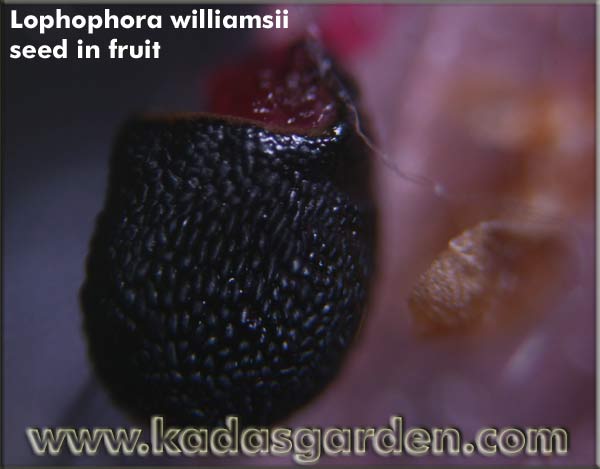
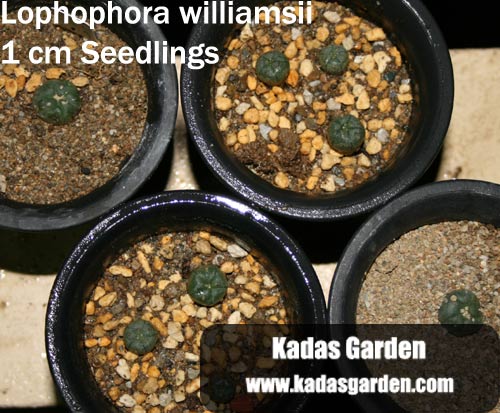
After learning about the reproductive strategies of L. williamsii continue to the Interactions page, or return to the Homepage and explore on your own.
